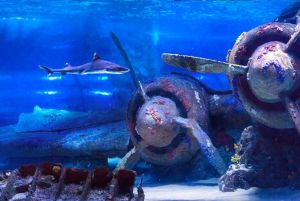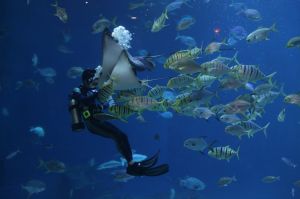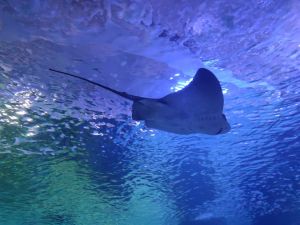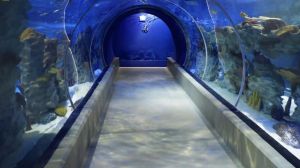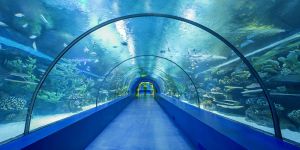Aquarium
The aquarium, It is an aqueous habitat or an enclosed water tank, usually made of glass or plastic, in which water, plants, stones and living organisms are placed. Aquariums imitate marine or freshwater habitats and contain a variety of creatures such as fish, plants, shellfish, invertebrates, and sometimes underwater decorations. They are also used for aesthetic and educational purposes, especially in homes, schools, and public places. Aquariums can vary in size from large to small, and the living organisms they contain may vary according to species. Aquariums are an interesting hobby or learning tool for those who want to study aquatic biology, environmental science, and the care of living organisms.
Types of aquariums in
Aquarium species are designed for the purpose of maintaining and exhibiting different species of aquatic creatures. Some types of aquariums are in the form of Tropical Aquariums, Saltwater Aquariums, Freshwater Aquariums, Coral Reef Aquariums, Plant Aquariums, Cichlid Aquariums, Arabian Kingdom Aquariums, and Special Purpose Aquariums. Here are brief descriptions of aquarium fish, aquarium plants, aquarium ornaments, aquarium sand, aquarium light, aquarium cleaning engine and aquarium cleaning:
Aquarium fish
Aquarium fish include fish of various species that can be fed in freshwater or seawater aquariums.
Each fish species has specific requirements such as different feeding, water temperature, water quality and tank size.
Fish species must be taken into account in terms of their levels of aggression and adaptability. Mismatched fish should not be kept together.
Aquarium plants
- Aquarium plants contribute to the purity of the water and produce oxygen.
- Its roots can provide shelter for fish and balance water parameters.
- Plants need proper lighting, CO2 and fertilization.
Aquarium decorations
- Aquarium decorations are used to add aesthetic and environmental richness.
- There are various options, such as natural stones, sand, shells, pieces of wood, and decorative objects.
- Ornaments can help fish hide or build nests.
Aquarium Sand
- Aquarium sand covers the bottom of the tank and is used to place plants or ornaments.
- The type of sand can affect the pH level. While alkaline sand can increase the pH level, acidic sand can lower the pH level.
Aquarium light
- Light is necessary for plants to be able to photosynthesize and for fish to increase their visibility.
- It is important to provide light in the right spectrum and time for aquarium plants.
- The light cycle must be regulated using automatic timers.
Aquarium cleaning engine
- The aquarium cleaning engine keeps the water clean.
- By filtering, it cleanses the water of contaminants and oxygenates it.
- It should be cleaned regularly and the filter media should be changed.
How to Clean an Aquarium?
- Weekly water changes, monitoring and adjustment of water parameters are important.
- The bottom pipes should be vacuumed and the filter cleaned periodically.
- Plants may need to be pruned and diseased fish may need to be isolated.
- Aquarium maintenance and cleaning should be done regularly to maintain the health of the fish and the balance of the aquarium. Creating a suitable environment for fish species, plants and the size of the tank is also key.
